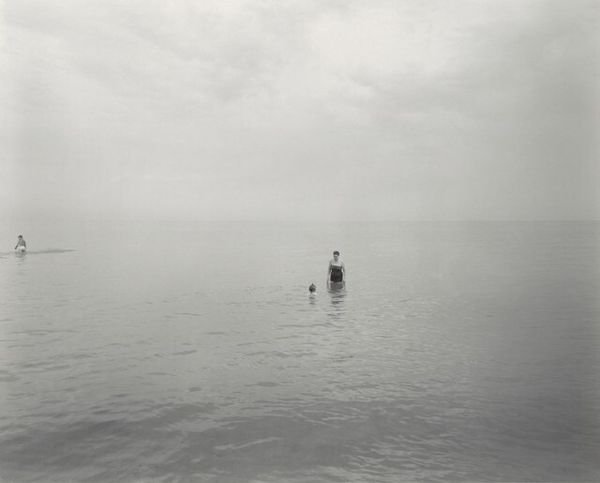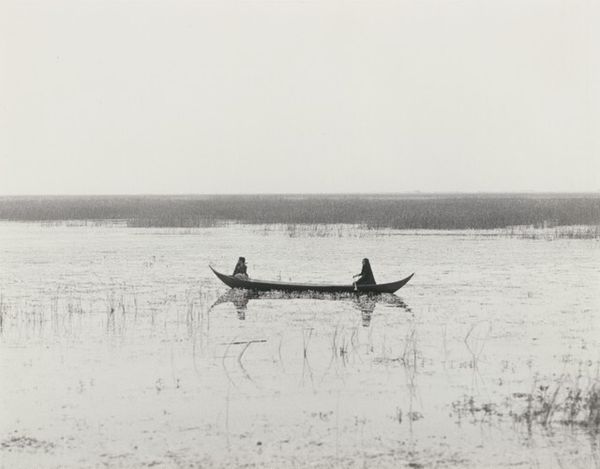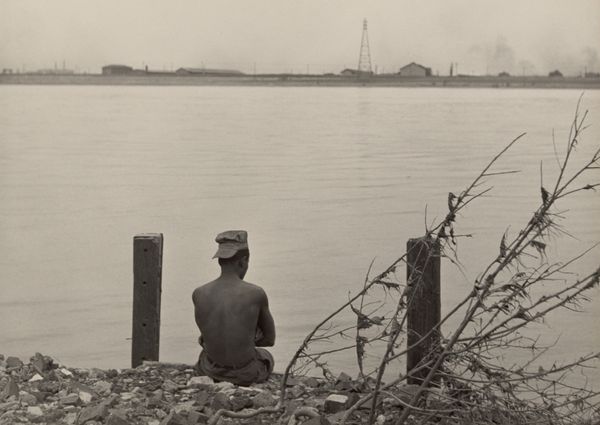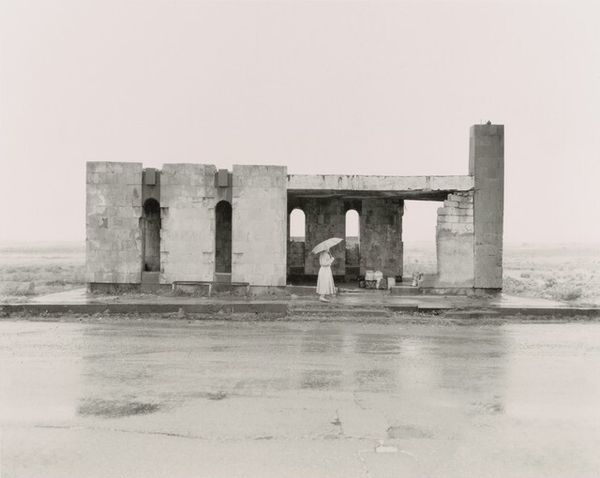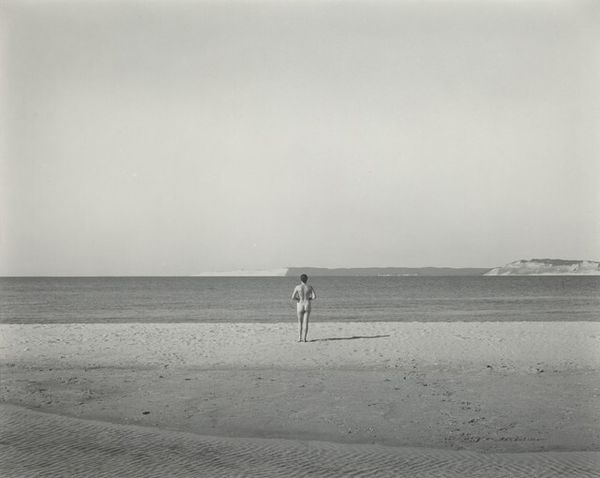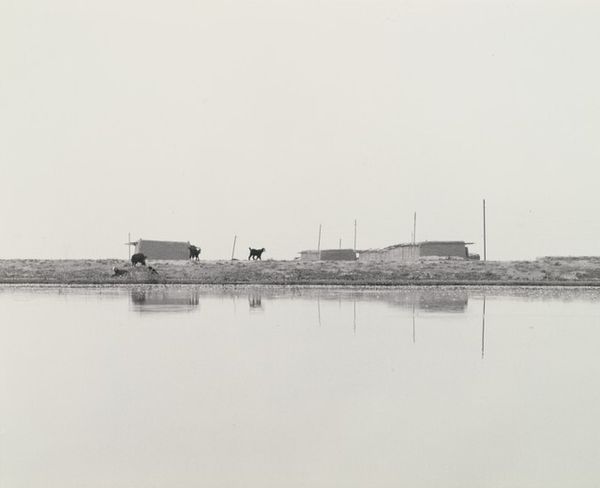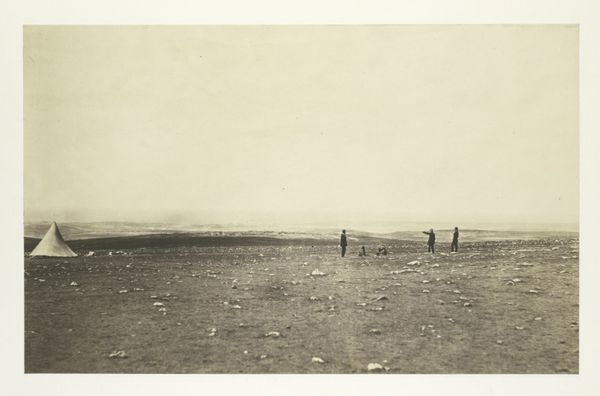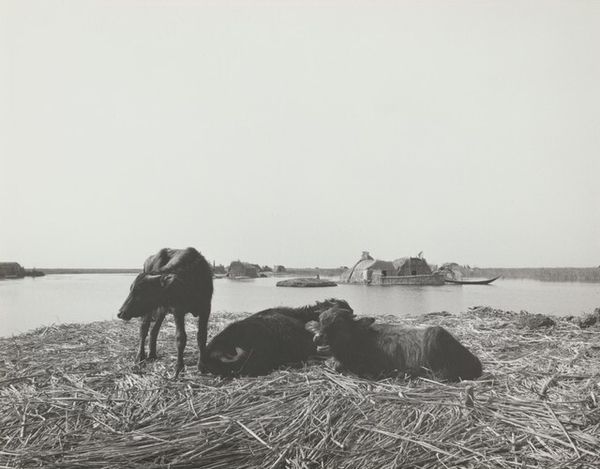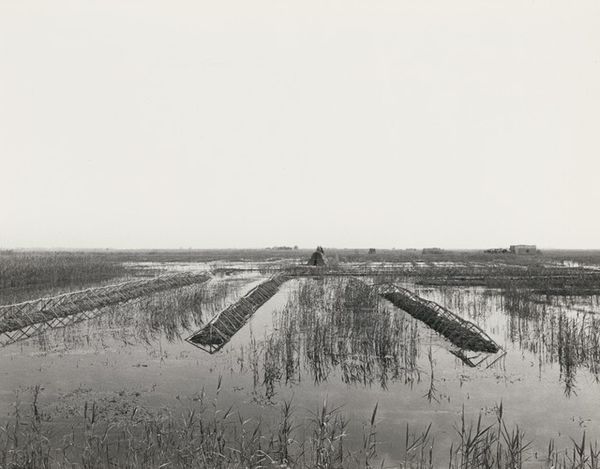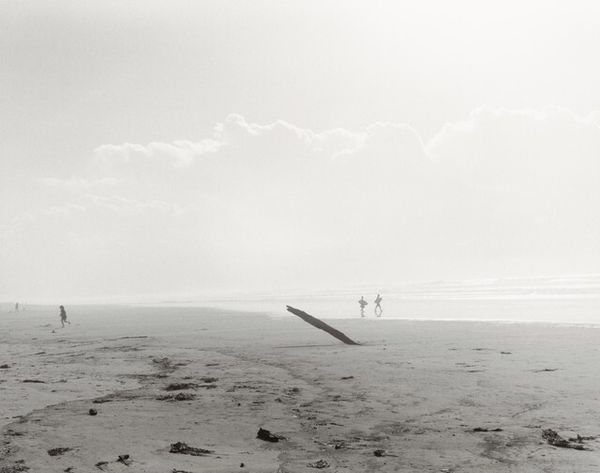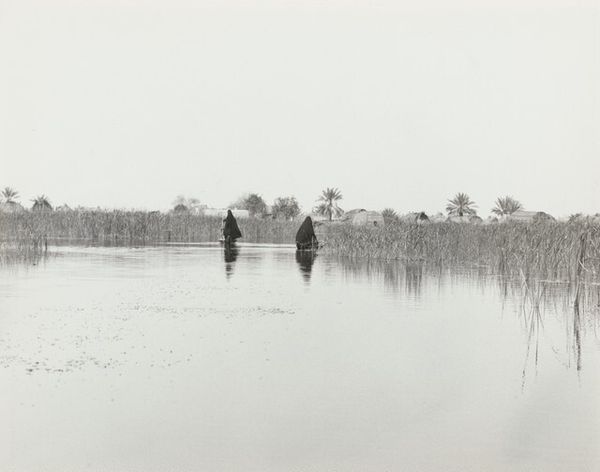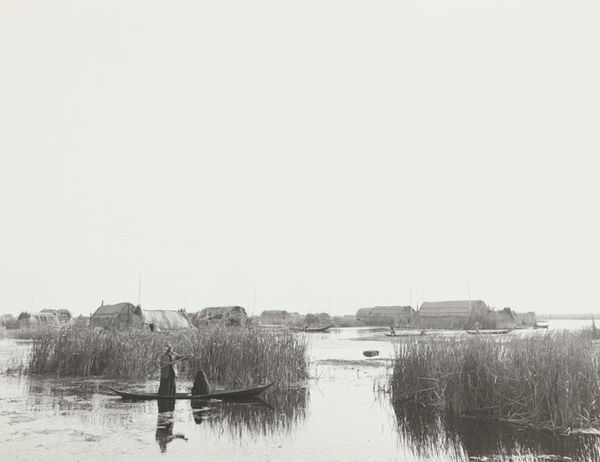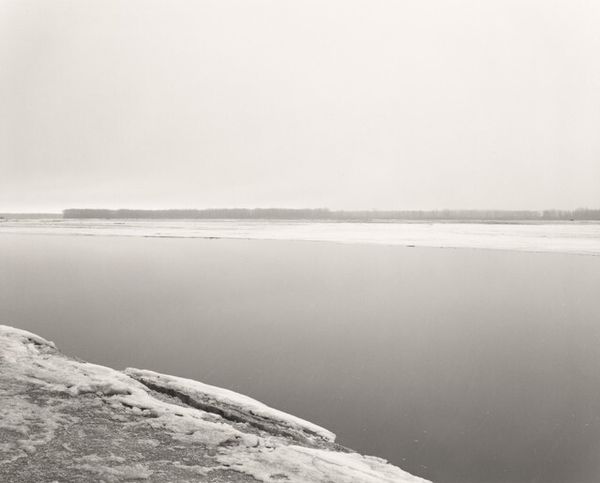
photography, gelatin-silver-print
#
portrait
#
cloudy
#
black and white photography
#
asian-art
#
landscape
#
black and white format
#
monochrome colours
#
figuration
#
photography
#
ancient-mediterranean
#
gelatin-silver-print
#
monochrome photography
#
gloomy
#
fog
#
monochrome
#
mist
#
monochrome
#
shadow overcast
Dimensions: image/sheet: 20.32 × 25.4 cm (8 × 10 in.)
Copyright: National Gallery of Art: CC0 1.0
Editor: Linda Connor's "Religious Effigies, Benares, India," a gelatin silver print from 1979, presents such a somber and ruinous scene. The monochromatic palette enhances the sense of decay. What’s your take on this, looking at the process and materials? Curator: This image presents an interesting commentary on labor and its relationship to belief. We see the remnants of what were clearly carefully constructed effigies, but the visible damage, perhaps due to natural causes or deliberate actions, forces us to consider the labor that went into creating and maintaining these religious objects. Notice the evidence of wear and tear – these are not pristine museum pieces, but rather active sites of worship subjected to material degradation. Editor: That's interesting, I hadn't thought about the degradation itself as part of the story. How does the choice of the gelatin silver print play into this? Curator: The gelatin silver process, with its capacity for rich tonal range and sharp detail, elevates what might otherwise be overlooked as simple "ruins" into something worthy of contemplation. Connor is using the very process of photography, traditionally seen as a documentary medium, to interrogate the material realities of religious practice and challenge conventional distinctions between art and documentation. Editor: So you're suggesting that the value lies not just in what is depicted but how the image itself is created and what that choice conveys? Curator: Precisely. We’re meant to consider not just the religious iconography, but the artist's hand in shaping our understanding of materiality, labor, and belief within a specific social context. The image-making process itself becomes a form of cultural commentary. Editor: This makes me rethink how I typically view photographs, thank you. I'll be looking closer at the material processes of photography moving forward. Curator: It’s essential to acknowledge that artistic choices reveal critical details of the image as art and artifact. I am glad I could bring some perspective to your learning.
Comments
No comments
Be the first to comment and join the conversation on the ultimate creative platform.
